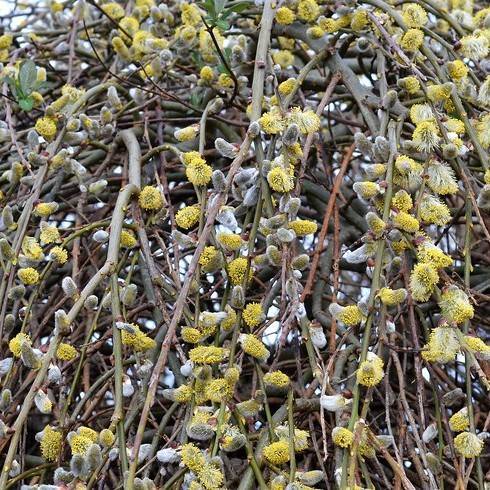
weeping pussy willow
Salix caprea 'Kilmarnock'
Cycle:
Perennial
Watering:
Frequent
Hardiness Zone:
6
Flowers:
Flowers In Spring
Sun:
Full sun
Soil:
Bog
Fruits:
Fruits In Summer Ready In Fall.
Leaf:
Yes
Growth Rate:
High
Maintenance:
Moderate
Salt Tolerant:
Yes
Invasive:
Yes
Care Level:
Medium
watering
Weeping willows typically enjoy regular watering during the growing season, typically from late spring to early fall. They require moist soil to thrive, so they should be watered about once a week, or whenever the soil feels dry about 2 inches below the surface when checked with your finger. In times of extreme heat or dry conditions, you may need to water more often. In the winter, when the tree is dormant, reduce watering to about once a month.
sunlight
Weeping willow (Salix x sepulcralis var. chrysocoma) does best with full sun throughout the growing season, which is typically March through October. In hotter climates with prolonged summer temperatures, it is recommended to give the plant some light shade from the afternoon sun. Therefore, the ideal sunlight requirements for this species would be 8-10 hours of full sunlight daily during its growing season.
pruning
Weeping willow (Salix x sepulcralis var. chrysocoma) should be pruned yearly to encourage better structure, health, and sprouting of new growth. Pruning should begin in late winter or early spring when the tree is still dormant and before any new growth begins. Start by removing any dead, diseased, or broken branches. Then, trim off any wayward growth and lightly shape the tree if desired. It is best to stick to very light pruning to avoid damaging the tree. Finally, prune away any branches that are drooping down too much or going into other parts of the tree. Work slowly and selectively to keep the natural form and shape of the tree. With weeping willow, keep in mind that too much pruning can reduce the gracefulness of the tree, so be sure to stick to lighter pruning sessions.
